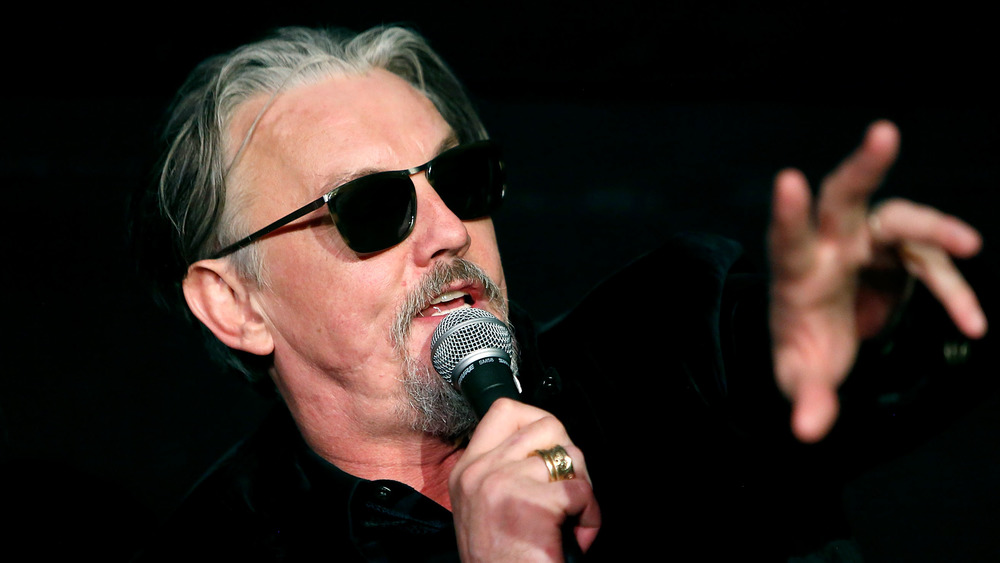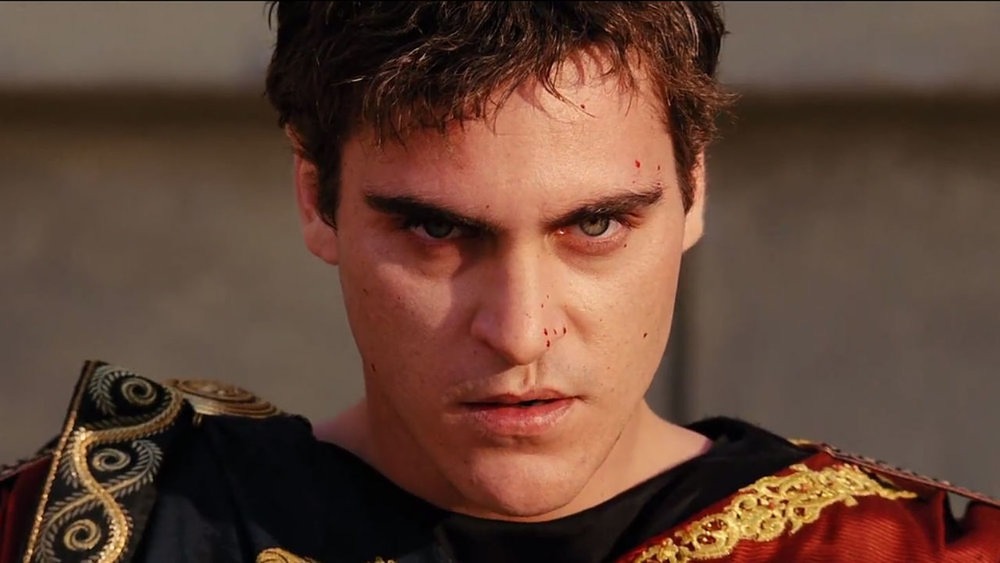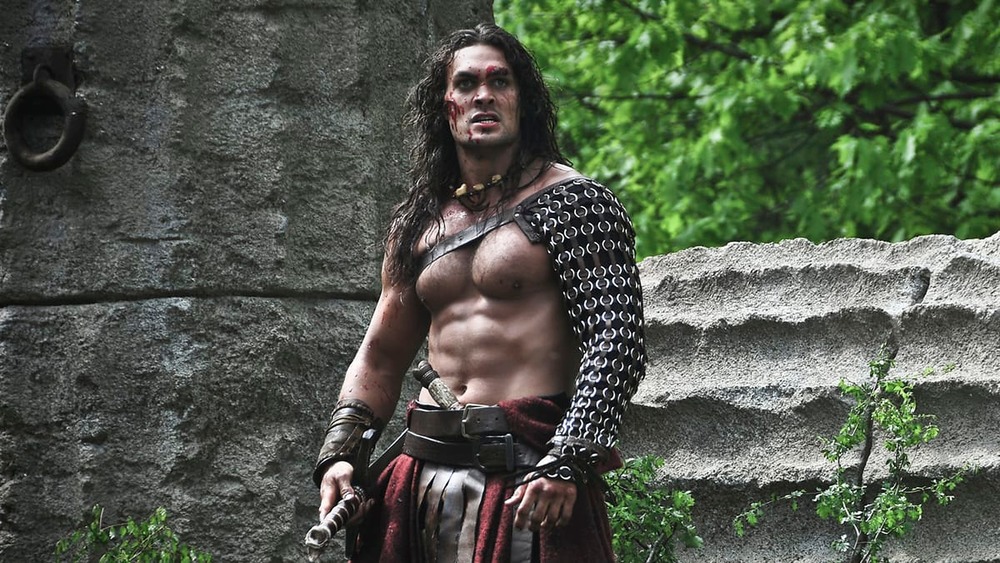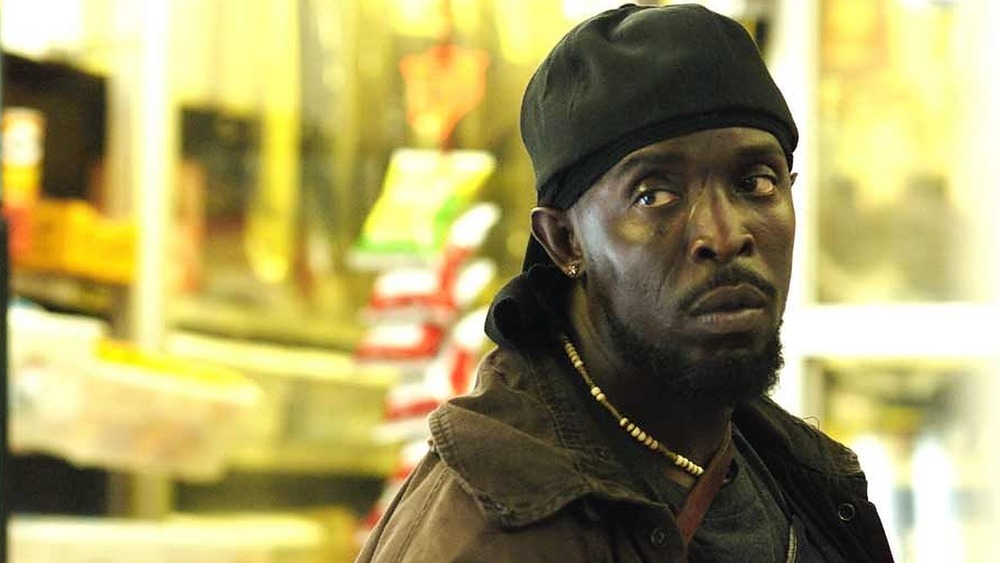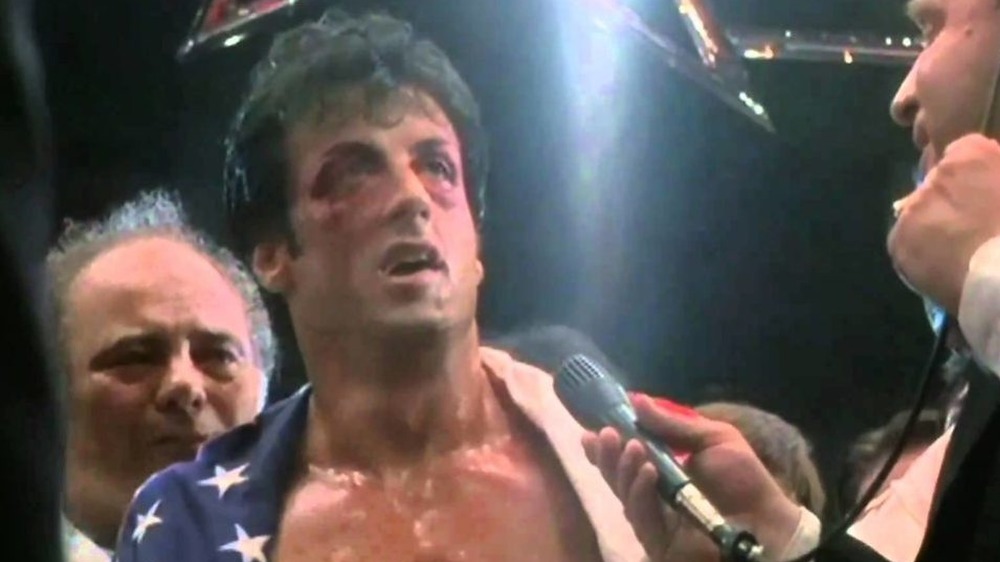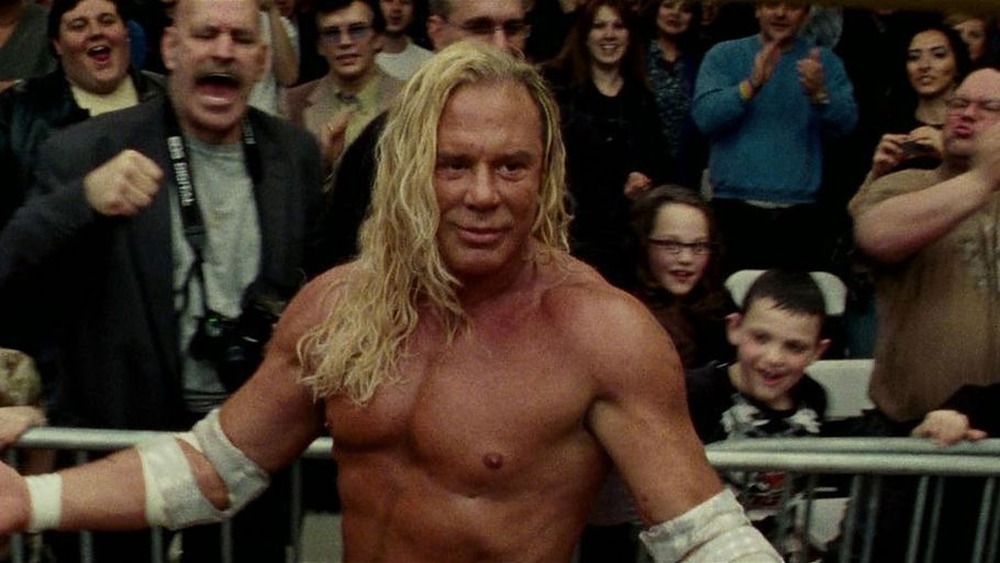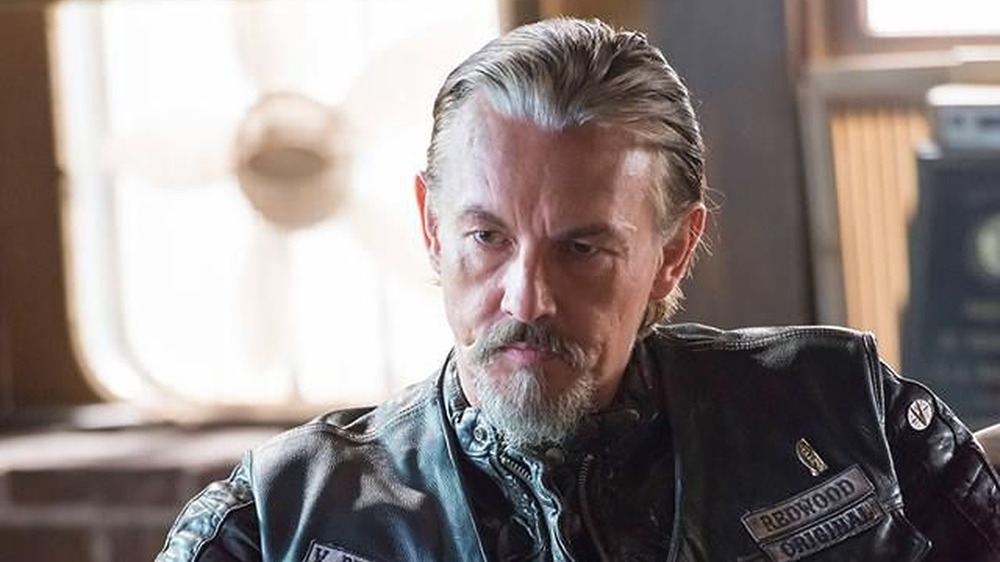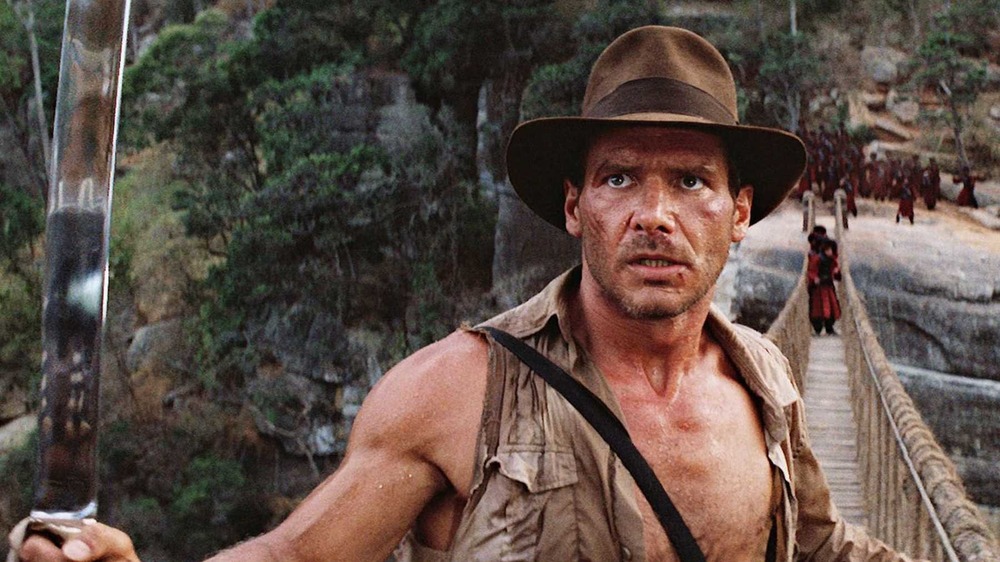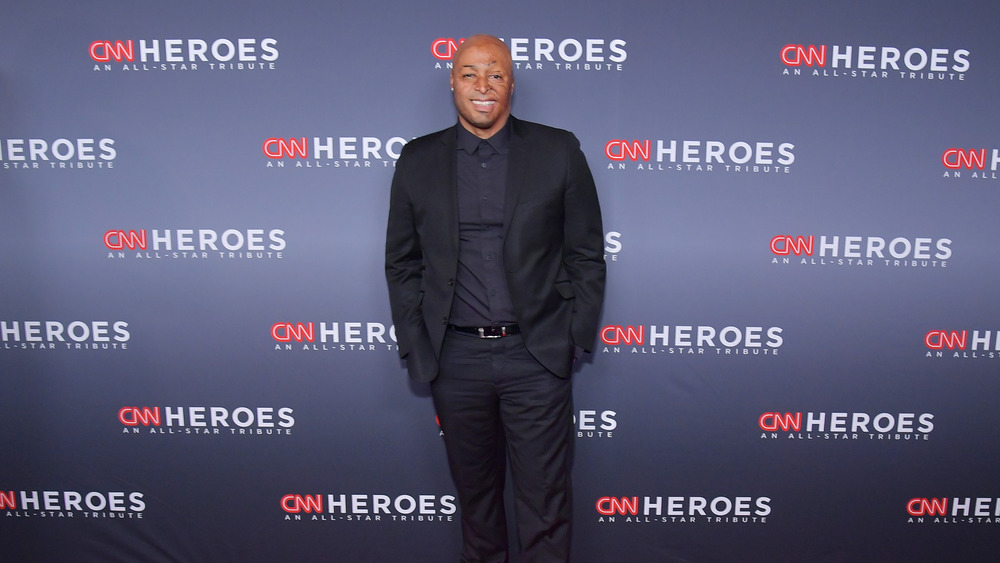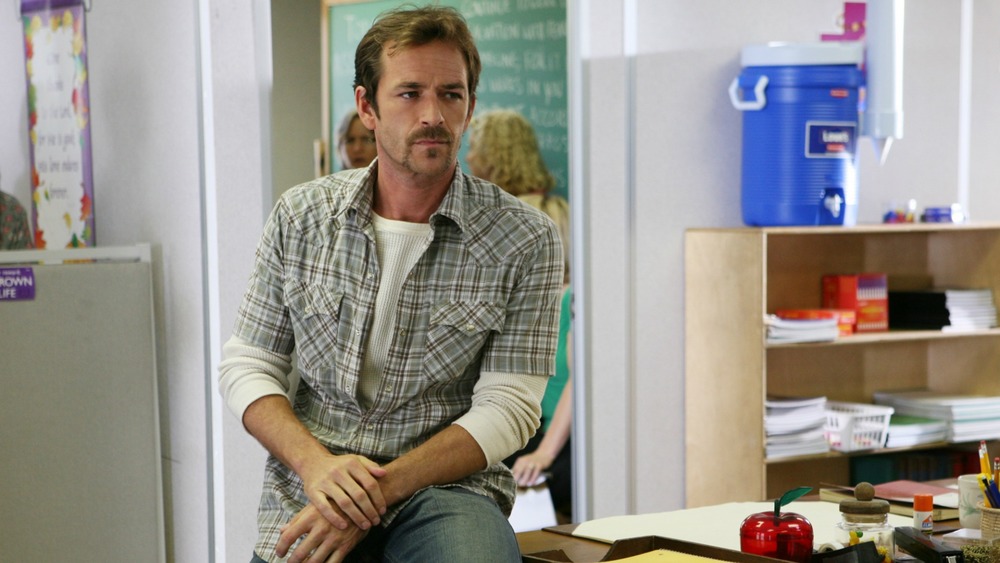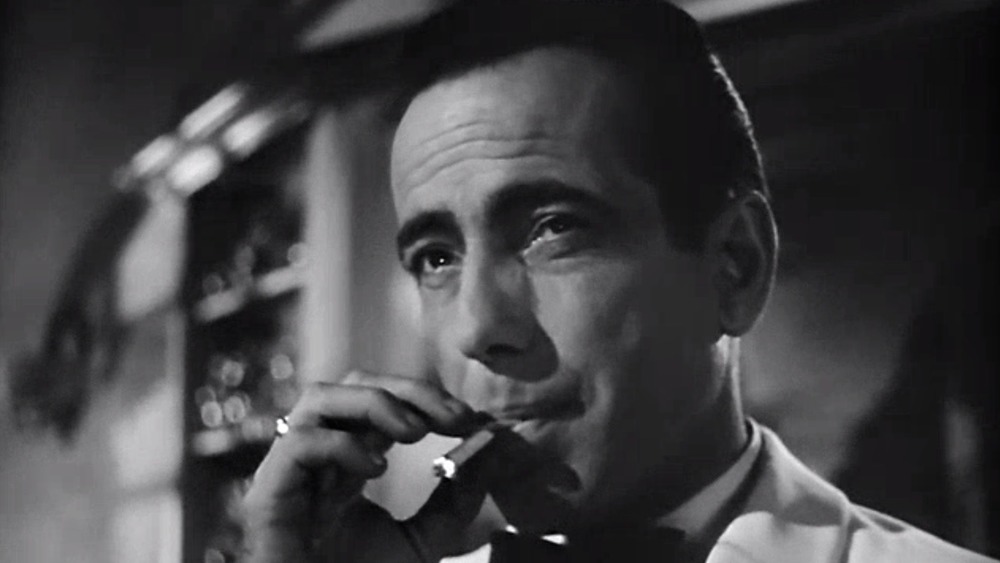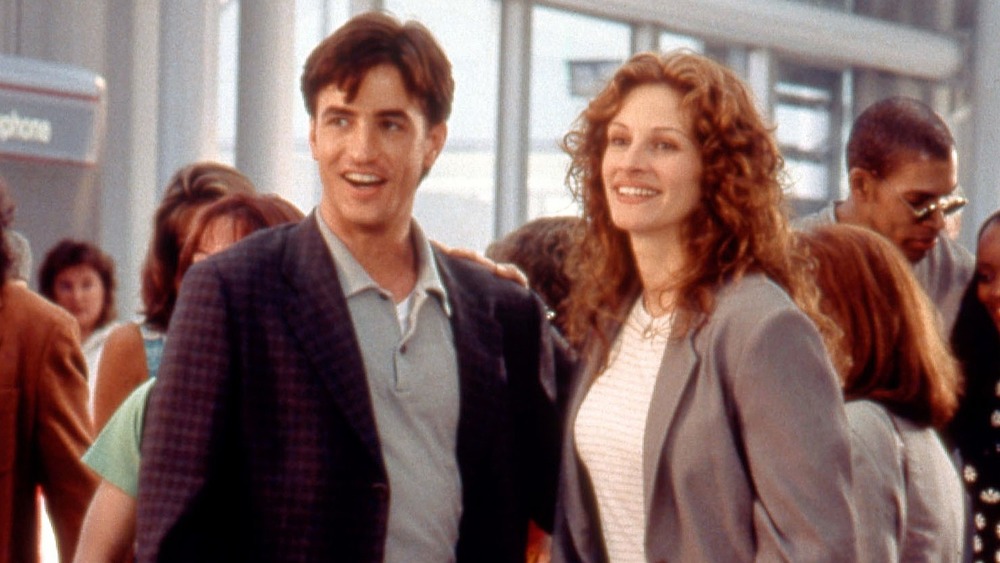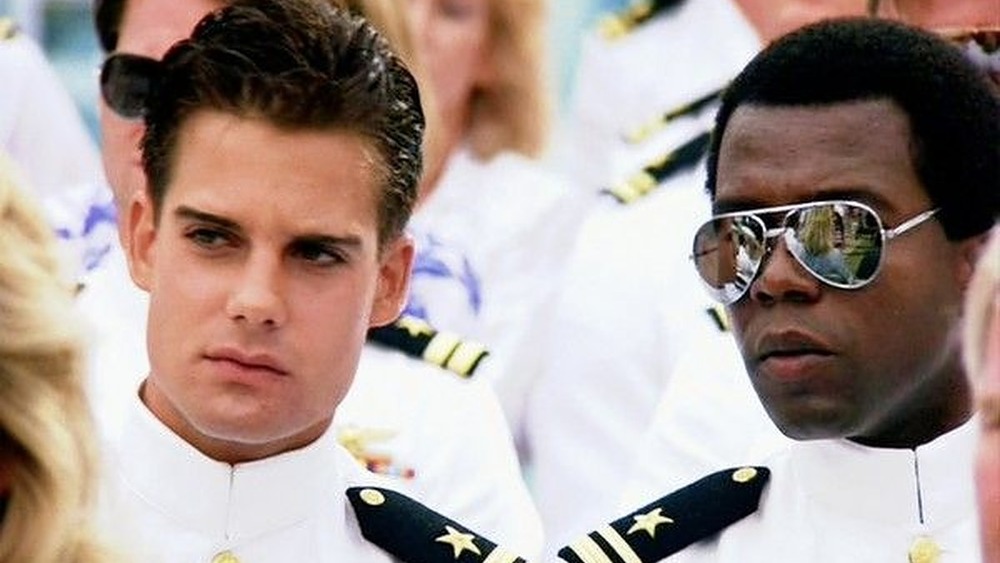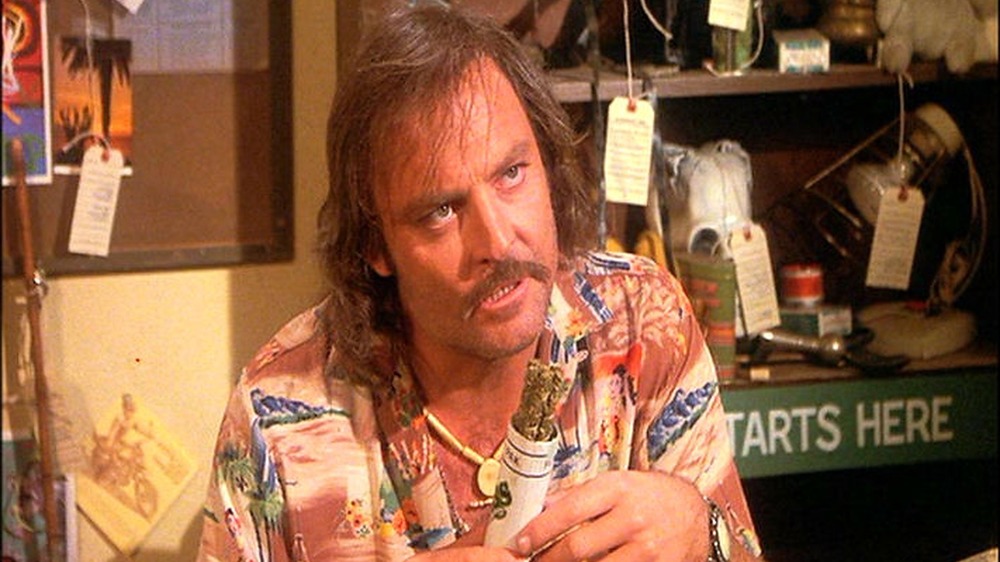Facial Scars That Helped These Actors Become Famous
The most recognizable feature of the actors assembled on this list is the distinguished career they have each led in Hollywood. The iconic roles we love them for are the product of their embrace of themselves — which includes their scars. For one reason or another, many of us have scars on our skin, and, as the saying goes, every scar has a story. Typically, we think of that story as the tale of how the scar came to be, and how the wearer bears it with pride. The scar is proof of having gone through something painful and becoming stronger for it, transforming the mark into a badge of pride and courage.
But the "story of a scar" can also be the account of what happens long after it is formed. In these stories, the triumph doesn't stop at the end of the pain that caused it – that's actually where the triumph begins. These stars have taken their scars and made them into symbols of their fantastic achievements in the entertainment industry. They have used them to open doors, define characters, and explore storytelling opportunities in unforgettable ways. Their skills have brought them the success they deserve, and their confidence in themselves, including their scars, has made them into legends.
Joaquin Phoenix
Joaquin Phoenix is widely regarded as one of the greatest living actors. He stands proudly for himself, as well as worthy causes, like animal rights. He's so solid in who he is that, as an actor, he can convey his internal world without saying a single word. Directors have remarked enthusiastically upon this dimensionality, calling it "limitless" and "extremely inventive."
For the title role in Joker, the dedicated actor "leaned in" to his own pre-existing physical features, from his distended shoulder to the scar on his lip. The scar is thought to be a microform cleft, the mildest form of cleft lip, but due to the actor's relative silence on the subject, the most we know for sure is that it, like his distended shoulder, has been with him since birth. It has served Phoenix's career well, fitting perfectly into other roles in which he has played a tough, multidimensional character. Consider his turn in 1999's 8MM, where he investigates the snuff film underworld alongside Nic Cage, or 2012's The Master, where we see him as a volatile World War II veteran struggling to adjust to the peacetime world. It's inspiring to see such primal fortitude radiate from both the personality and physicality of this impressive actor.
Jason Momoa
Game of Thrones' casting of Jason Momoa as the formidable Khal Drogo was a stroke of genius. Imagining anyone else in the role is impossible, especially once one has watched the first season unfurl and has thus seen the actor balance fearsomeness with tenderness. In 2011, the same year as Game of Thrones' first season debuted, Momoa also starred as the titular character in Conan the Barbarian. If one burly bruiser works, why not two, right?
Both of these roles are for the manliest of men, whose lives revolve around war, dominance, and honor. Momoa's scar fits these roles perfectly, just as it would eventually compliment his portrayal of the trident-bearing heir to the throne of Atlantis in Aquaman. His scar precedes all of these roles, though: He actually got it in a bar fight, in which he took a pint glass to the face. After the fact, he felt somewhat relieved at the idea that he wouldn't constantly be called "pretty boy" anymore. That relief may have been premature, though, because fans of any of his roles before and since the incident still don't hesitate to swoon.
Michael K. Williams
Michael K. Williams' 25th birthday present came in disguise. In a fight outside a bar from which Williams and his friends, in his words, barely escaped with their lives, one of the assailants cut the actor across the face with a razor. "Things changed immediately after that," Williams stated: Instead of just dancing in music videos, directors started wanting him to play more "thug roles." Eventually, his new look attracted the attention of others in the entertainment industry.
Though it was a terrible ordeal to go through, getting his scar actually helped Williams launch his successful career as an actor. One of the production offices he had auditioned at had a Polaroid picture of the actor, and none other than Tupac Shakur happened to see it in 1996. He thought that Williams looked like he deserved a part in his then-in-production film, Bullet. Eventually, Williams' career took him all the way to HBO's The Wire in 2002, where he played trench coat-wearing stickup man Omar Little to massive acclaim. An illustrious entertainment career is an incredible thing to come out of a terrifying near-death experience, and we're glad Williams not only escaped with his life, but has since spent it gracing our screens with his acting talent.
Sylvester Stallone
Sylvester Stallone is distinctive in just about every way. We recognize him for his dashing good looks, his voice, and his skill as a performer, which powers his appearances in high-intensity, action-packed flicks of all kinds. We know him best from quotable classics like Rocky and Rambo: First Blood, both of which were so popular that they spawned series in their names, which continue their enthralling narratives.
Stallone's scars aren't extremely noticeable, but what is noticeable is their effect. The result of a mishandled pair of forceps during the actor's birth, the scars signify the severing of one of his facial nerves, which left part of his chin, lip, and tongue paralyzed. This partial paralysis has affected both his facial expression and his vocal patterns, giving him his iconic slight facial droop and low, pleasantly drawling tone. While Stallone struggled initially to find success as an actor, he wrote perhaps his most iconic role, Rocky himself, and refused to sell the script until he was granted the starring role. This is a man who knows how to play (and write) to his strengths — and what great, unique strengths they are.
Mickey Rourke
Mickey Rourke is a former boxer, and this has played a part not only in his facial composition, but also in what he brings to the table as an entertainer. His commanding presence can't be denied: We can only imagine what a fearsome foe he must have been in the boxing ring. He was no doubt much more formidable than the past-his-prime protagonist Randy "The Ram" Robinson, who he plays in 2008's The Wrestler. This role won the actor a Golden Globe and a BAFTA Award for Best Actor, a nomination from the Oscars, and several other independent critical awards.
Rourke has stated that boxing, and a poorly performed plastic surgeon's attempt to remedy his old boxing injuries (which included a smashed cheekbone), were the culprits behind his frequently-changing face. These changes have unfortunately been the subject of tabloid speculation, when his incredible acting should be in focus instead. The actor speaks with grace about his transformations, both personal and physical. He came from a violent background as a kid, and the growth he's sustained as he's explored his talents is reflected in both his athletic and entertainment careers. Said careers are, in turn, reflected in each other.
Tommy Flanagan
Tommy Flanagan is pretty much the dictionary entry for "tough guy." His most famous roles are universally recognized rebels: He worked with Joaquin Phoenix on Gladiator in 2000, played Morrison in the 1995 epic war film Braveheart, and of course, played Chibs Telford in the 2008 crime series Sons of Anarchy. Chibs, like Flanagan himself, was born in Scotland, and at the end of the series is the president of the Sons of Anarchy Motorcycle Club Redwood Original, stylized SAMCRO.
As the president of a motorcycle gang, Chibs is loyal and level-headed, with a wisdom commensurate with his greater years, relative to the younger, more hot-headed Sons. However, he is no stranger to using violence when necessary, and has committed a number of murders. He is stoic and stalwart, a leader you wouldn't want to mess with. The scars on Flanagan's face, the result of an assault outside a nightclub where he had been DJing, are incorporated into the character to compelling effect, serving as the inspiration for the nickname "Chibs," which is Scottish slang for "knife." Flanagan has had his scars throughout most of his career, and at each turn, they have enriched his characters and contributed to the formidable reputation for which he is known today.
Harrison Ford
Harrison Ford is one of the most well-recognized film stars of our time. He is best known for playing Han Solo in Star Wars and the titular hero in the Indiana Jones franchise. For such charismatic, distinguished, and adventurous roles, Ford's chin scar fits perfectly. It has even been worked into the backstories of the characters he plays: In 1989's The Last Crusade, a young Indy defends himself against a lion by picking up a nearby whip and cracking it, slicing himself in the chin in the process.
This scene gives us a window into Indy's improvisational nature, and his ability to take on new challenges. It also pays homage to Ford himself, by using one of his own distinctive physical features to provide a more intimate look at the iconic character. The memorable scar has even been incorporated into roles Ford himself does not play. As one Redditor pointed out, Alden Ehrenreich sports a fake chin scar for his performance as a young Han Solo in Solo.
J. R. Martinez
The story of J. R. Martinez is as harrowing as it is inspiring. The Dancing With The Stars contestant (and winner of the 2011 mirror ball trophy) and star of All My Children, which ran from 1970 until 2011, was deployed in Iraq in 2003 when his Humvee hit a landmine and trapped him in the vehicle. The then-19-year-old thought that these would certainly be his last moments.
Miraculously, Martinez survived, and went on to give a very informed performance as All My Children's Brot Monroe, a character who is himself a veteran. Martinez' story has inspired not only other veterans, but burn victims everywhere: The performer makes a point of wearing his scars proudly. Martinez has visited other soldiers and patients dealing with burns as well, so that they know there is a future for them, even if it's not the one they envisioned. He describes his experience as a gift of inspiration that he can now give to others, as well as one that shows him who truly loves him for who he is as a person. Finally, he considers his scars a reminder of the power we have to tell our own fearless stories, onscreen and off, and in doing so, take a stand against stigma.
Luke Perry
Luke Perry's first major role as Dylan on Beverly Hills, 90210 saw him portray a bad boy with a good heart. The neat nick above his eyebrow (which he spends a lot of time seductively wiggling) serves Dylan's rebellious aesthetic perfectly. In fact, fans specifically obsess over the scar on social media.
As his career advanced, Perry's audience only grew bigger — both in the real world, and in fictional ones. The actor was featured on a two-episode run on Criminal Minds in 2008, as a cult leader who has spent time in prison. The final role of the actor's career was Fred Andrews on the 2017 TV drama Riverdale, as he tragically passed away on March 4, 2019. Fred is a gruff but wholesome man who owns a construction business and has hopes that his son might stick around and follow in his footsteps. His hands-on lifestyle combined with Perry's scar to give off an air of capability and solidity that serves as a lovely final embodiment of his career.
Humphrey Bogart
The scar that adorns Humphrey Bogart's lip is distinctive enough to receive an entire page of description in a 1997 biography. And that's saying something, because Bogart's life story is impressive. You don't get the American Film Institute to describe you as the greatest male American screen legend of the 20th century by being boring.
Bogart was an iconic noir actor and romantic lead, with 1942's Casablanca serving as probably the most well-recognized example of his work. Part of what made him so alluring may well be his tough-guy upper lip scar, which also gave him his trademark smirk (or grimace) and his distinctive way of talking, with a slight lisp and cool-as-a-cucumber stiff lip. Bogart allegedly earned the scar during his naval service and had it sewn up when he went into film. From then on, the scar helped him earn the acclaim and renown he still posthumously enjoys.
Dermot Mulroney
Some faces are just timeless, and Dermot Mulroney's seems to be one of them. From starring opposite Julia Roberts in the 1997 romantic comedy My Best Friend's Wedding to playing distinguished and gentlemanly roles a decade and a half later (think Russell on New Girl), Mulroney has always been an engaging actor, and his scar has always been part of his iconic good looks. His characters have worn it well, and it always adds to the portrayal, rather than taking anything away.
On Crisis, an NBC action-thriller series that was unfortunately canceled in 2014, Mulroney played an ex-CIA analyst who is betrayed by the government. The stakes are high, the character is grave, and the scar works as perfectly as it always has, accentuating Mulroney's performance. Mulroney has stated that since his scar has been there since he was young, he doesn't think about it often. Today, it is the cherry on top of any of his performances.
Adrian Pasdar
Some scars fit roles perfectly, while others offer perspective, and sometimes, a platform to advocate from. In the case of Adrian Pasdar, though, his scar is the remnant of a near-death experience that propelled him into acting. Pasdar survived a grueling car accident in college, which left him with scars on his lower face. Horribly, he was no longer able to play football, for which he had earned a scholarship. He dropped out of college entirely and took a job with a theater group.
The rest is pretty much history. Pasdar auditioned for Top Gun and the director of the 1986 film, Tony Scott, liked him so much that he wrote the role of Chipper especially for him. It was a minor role, but it was a major foreshadowing of things to come, and Pasdar owed it all to the accident that transformed his life far beyond the scars it left him with.
Stacy Keach
Stacy Keach often portrays policemen and detectives on screen. Keach's intimidating presence, coupled with the mustache he has kept for years, has made him a standby for these types of parts. What some people may not know, though, is that Keach wears his mustache to hide his cleft lip and partial cleft palate.
As his career has advanced, however, Keach has started wearing his scars openly. Honesty is an important message that Keach works to embody — not only for his own mental health, but also to proudly represent those born with craniofacial differences. He joined the board of the World Craniofacial Foundation in 2000, the year in which he also accepted a position as a spokesperson for the organization.
While Keach has played many parts in the entertainment industry, from Shakespeare performer to composer, the part of advocate for the cleft community is an incredibly special one. "The message is constant and clear," he detailed in 2016. "Use whatever talent you discover you have to offset any negativity coming your way. Let your 'special circumstances' become a motor to achieve greatness in whatever field you choose to pursue."
